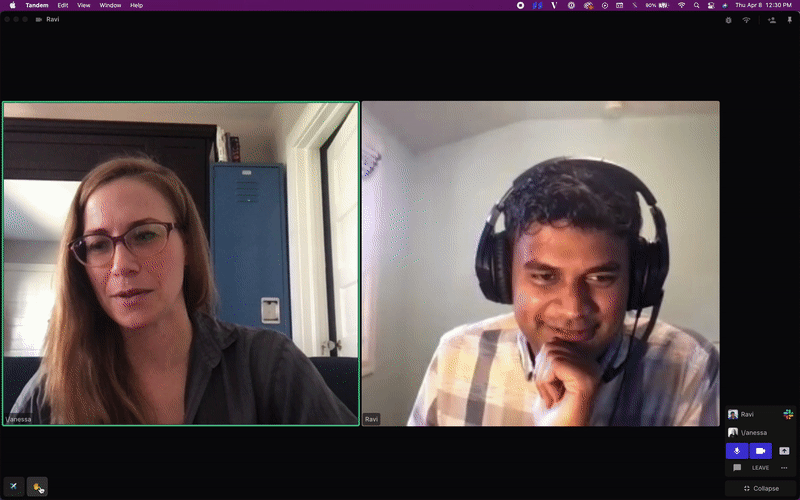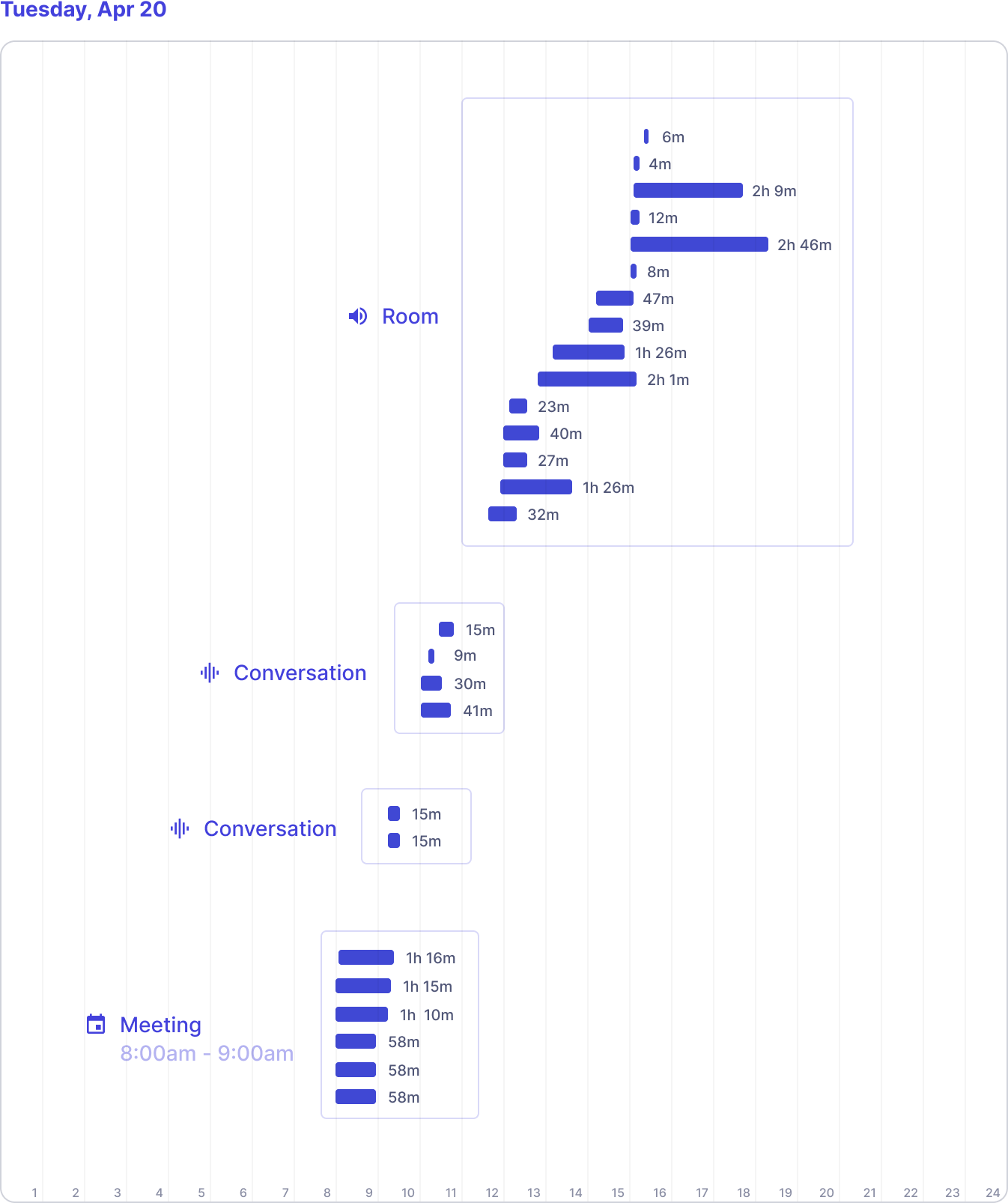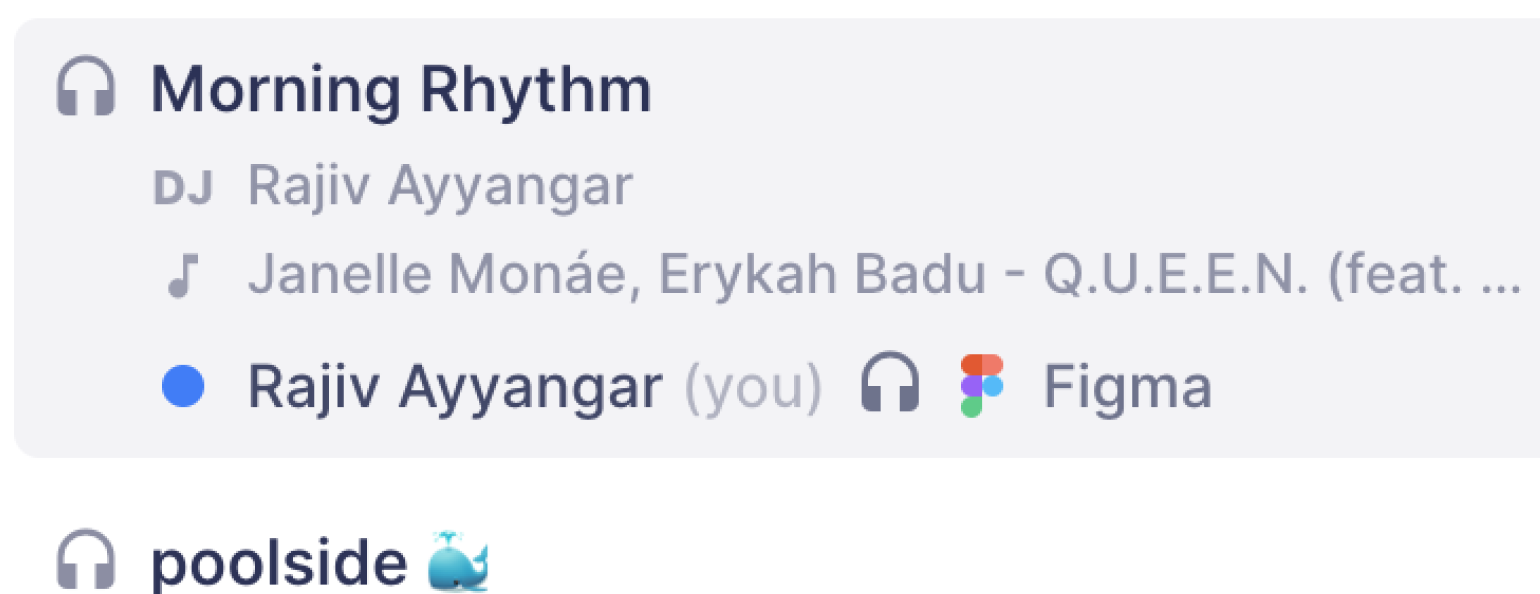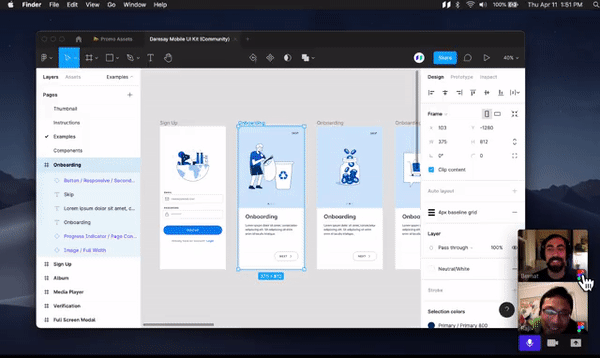The Virtual Office is Here to Stay
Rajiv is co-founder and CEO of Tandem.
"Every company is a remote company." I said this on-stage at YC Demo Day in 2019, meaning that every company becomes distributed as it scales (multiple offices, travelers, working-from-home). I didn’t anticipate a global pandemic would make this plainly true. In weeks, Tandem usage jumped 30x.
What we saw in 2019, everyone saw. Companies of all sizes, from startups to Fortune 500s, needed a Virtual Office. We quadrupled our team to meet the need. The blogosphere and media took note, adding Tandem and other newly launched Virtual Offices into roundups of "remote tools" and "collaboration tools". While not wrong, they failed to capture what makes the Virtual Office a distinct product category.
This post will cover the rise of the Virtual Office and how it transforms distributed work. I'll also unpack the key concept of Presence. In my next post I’ll show how the Virtual Office is merging with the physical office to unlock truly flexible “hybrid” collaboration.
The Virtual Office was inevitable
Before Slack, companies used email for all internal communications. Messy groups and interminable threads made for verbose, chaotic discussions. Slack designed for internal use from the start—reducing friction, increasing speed, organization—and effectively replaced email.
Similarly for real-time communication, companies once relied on dial-in conference calls. Zoom/Meet/Webex added video and web links, but remained conceptually similar: To talk, you must first generate a meeting id, then send the link or schedule it, etc.
Virtual Offices upend this model with a simple mechanism: To talk to a teammate, click on them. It seems shockingly direct at first, but Presence makes it natural.

What is (and isn’t) a Virtual Office?
Slack and MS Teams are great for async chat, but their concept of Presence is largely meaningless—you're always available. Also, text chat doesn't build trust[1], which explains why Slack can feel more transactional, less human than talking.
Virtual Offices elevate Presence and eliminate friction to create the flow of working in-person.
Unsurprisingly, remote workers who traditionally rely on async chat consistently cite loneliness and lack of communication as top struggles[2]. The Virtual Office solves these in a radical, visceral way.
Virtual Offices elevate Presence and eliminate friction to give distributed teams the flow of working in-person. Put simply: You can see who's around, and talk in a click.

Because Virtual Offices are designed for internal use with your team, they tend to share a few other traits. Most have persistent 'rooms' to allow spontaneous gathering. They emphasize collaboration (more on this later). They include fun ways to celebrate and emote that might seem inappropriate on external calls.

The Virtual Office transforms distributed work
The first thing people tend to notice in a Virtual Office is it feels dramatically easier to talk. The old conference call apps start to feel clunky and restrictive, with minute-long setup and connect times. By contrast, lower friction allows you to have the "tap on the shoulder," water-cooler chats, and hallway conversations before and after meetings.

While removing friction does help to create spontaneous connection, and the feeling of ease, the true key is really Presence.
What is Presence?
Leaving aside the rich history of Social Presence Theory[3], Presence in modern communication means an intuitive awareness of your teammates' context. For example, in real life, you may want to ask your teammate a question, but decide your question can wait when you turn around and notice they're wearing headphones and writing code.
True real-time Presence creates the feeling of being in an office with co-workers. You don't feel alone. You feel like you can talk to people as easily as turning your head (and, in a Virtual Office, you can).
Presence should be effortless. In Tandem, the option to display your active work app is both automatic and easy for others to interpret. When I see Tim switching between Terminal and VS Code, I know he's coding. With the caveat that each person is in control of their own Presence, more signals are better - for example, their calendar availability, what music they're listening to, or whether they're away from the keyboard. And of course, seeing people talking in the actual meetings and rooms is a powerful piece of Presence.

Presence can also be functional. I can click on a song to listen along to Bernat's tracks via Spotify integration. In a Tandem call, you can click on someone’s Google Doc icon to jump to their doc, allowing you to literally "get on the same page," assuming you have permissions.
Ultimately, Presence isn't about signals, it's about stories. When I see Tim and Bernat in a room switching between Google Docs and Figma, I know they're reviewing specs and designs. When I see Vivy and Vera still talking in their meeting, I know why Vivy's late to our 1:1, and rather than feeling uncertain, I'm glad—it's probably an important conversation!
The Virtual Office illuminates these mini-stories, saves tons of unnecessary coordination, and brings back your team's natural choreography, rhythm, and pulse.
Trust, collaboration, and creativity
For those obsessed with productivity and organizational velocity, the Virtual Office is a game-changer, and it's not hard to see why. Talking in real-time builds trust[4], and trust is speed[5]. Also, more varied, "bursty" communication is associated with highly creative and productive teams[6].
But to see this actually happen is magical. Your team feels more "alive" and connected. Seeing teammates talking with each other creates energy that's contagious. Even introverted team members feel more comfortable reaching out for help, or to share new ideas. Your team feels more like a team again. New team members quickly feel a sense of belonging and camaraderie. Your team gets to know each other, not just as colleagues, but as people.
The Virtual Office is having its moment now
The pandemic accelerated a trend towards more real-time remote work, combined with better audio-video tech and a younger demographic entering the workforce.
Remote 1.0: Don't talk to me
The first wave of modern remote-first companies like Automattic, Gitlab, and Zapier largely solved the challenges of remote work leaning heavily on asynchronous communication (e.g. Slack, Docs).
While their success is admirable, going fully async is a tremendous cultural shift that most enterprises cannot (and don't want to) undertake. We're social creatures, and—as has been studied extensively—we build trust through talking[7]. These companies had no other option, though, as video-conferencing technology was clunky and unreliable.
Remote 2.0: effortless real-time collaboration
Video calls are better now, partly because bandwidth and laptops have improved, and largely due to prior art. For example, our audio-video team at Tandem has decades of experience at FaceTime, Discord, Skype, and Twilio.
We've changed as a species, too. Through the pandemic, we've all become competent (if not fluent) with the basics of video chat. Tandem and other virtual offices would not be able to innovate on calls UX (reducing friction, increasing collaboration) without Zoom, WebEx, and other video conferencing apps paving the way.
Adding to this is the demographic shift as Millennials and Gen-Zers enter the workforce. They're more comfortable and fluent with video and audio. Many grew up playing real-time, multiplayer games and making friends around the world, talking on voice chat apps like Discord and Teamspeak.
In fact, multiplayer games now set the standard for what work should feel like. The rise of multiplayer collaboration in every functional work mode, from documents (GDocs, Notion) to design (Figma, FigJam), to code (replit), calls out for a Discord-like communication meta-layer[8] to allow effortless real-time collaboration.

It looks like this: When on a call, I can see Bernat is on Figma and in one click, I can join him and work on designs. I can then ask him a question about a Notion spec, without pausing to send the link, and he can join me in a click. This creates a collaborative flow that can be even better than in-person.
To see where this is heading, check out this UI from Minority Report. Look past the specific tech[9], and focus instead on the pace and sensation:
This is how collaboration should feel—instant, personal, instinctive—and it's where the Virtual Office will take us.
Final thoughts, and Part II
The Virtual Office is having its moment now, and that isn't going to end with the pandemic. In Part II, I'll show how the return to the workplace and a hybrid future makes the Virtual Office critical, and I’ll explore the ways in which the virtual and physical offices are merging to create the workplace of the future.
Thanks to Kevin Kwok, David Ulevitch, Sep Norouzi, Laura Talbot, Suhail Doshi, Brianne Kimmel, and others for reading early drafts of this.
Want to build this future with us? We're hiring!
References and further reading
Podcasts
- The Power of Synchronous Communication with Rajiv Ayyangar, on Inside Remote with Andrej Fodor
- How to collaborate remotely with Rajiv Ayyangar, on Building Remotely with Sondre Rasch (SafetyWing)
[1],[4],[7] In Being there versus seeing there: Trust via video (2001), Bos, Gergle, Olson, and Olson show how group trust builds over time, as measured by mean payoff in a social dilemma game. Note that audio and video reached in-person (face-to-face) levels of trust, while chat never did.

[2] See "What's your biggest struggle" in Buffer's State of Remote Work reports: 2018, 2019, 2020, 2021. While "Not being able to unplug" has risen, especially during the pandemic, Loneliness and Collaboration / Communication, when taken together, are by far the top struggle.

[3] I can't improve much on Cocoon founder Alex Cornell's post on Social Presence Theory, and I've come to similar conclusions. The research is evocative, though of limited direct use in building virtual experiences.
[4] See [1].
[5] Psychological Safety, loosely understood as "group trust," is the best-studied social dynamic of effective teams. Coined by Amy Edmondson of Harvard Business School, this dynamic has been extensively studied by Google, who found it the key factor to team productivity.
Edmondson, Amy. “Psychological Safety and Learning Behavior in Work Teams.” Administrative Science Quarterly, 1999 (JSTOR link)
What Google Learned From Its Quest to Build the Perfect Team (2016), Charles Duhigg, The New York Times
How to build psychological safety in your remote team (2019), Rajiv Ayyangar, Tandem blog
[6] In a randomized controlled trial of 52 software teams, Riedl and Woolley (2016) found "bursty" communication patterns in the most productive teams (link). While this was correlation, not causation, it's consistent with our observations of communication patterns in Tandem. The optimal cadence for creativity and execution is likely some mix of rapid communication and uninterrupted independent work - a compromise between the Maker's and Manager's schedule.
"People often think that constant communication is most effective, but actually, we find that bursts of rapid communication, followed by longer periods of silence, are telltale signs of successful teams."
— Riedl & Woolley
[7] See [1].
[8] Kevin Kwok (investor in Discord, Figma, and now Tandem) independently came to similar conclusions as we did, and observed the need for Discord-for-work, naming the "meta-layer" concept in his 2019 essay The Arc of Collaboration. Highly recommended.
"Discord is the best analog for what should exist. For a while Slack and Discord were compared to each other as competitors. As Discord has focused squarely in gaming, and Slack in companies this comparison has been used less and less.
But this misses the main distinction between Slack and Discord.
Discord is actually two products bundled into one. It *is* a messaging app that looks akin to Slack. But it is *also* a meta-layer that runs across all games."
— Kevin Kwok
[9] This interface has long been a personal inspiration for me. It was prototyped at MIT's Media Lab and built, in real life, by Oblong Industries. Oblong's co-founder, Kwindla Kramer, later founded Daily.co, which is making real-time video possible for a new generation of apps.
